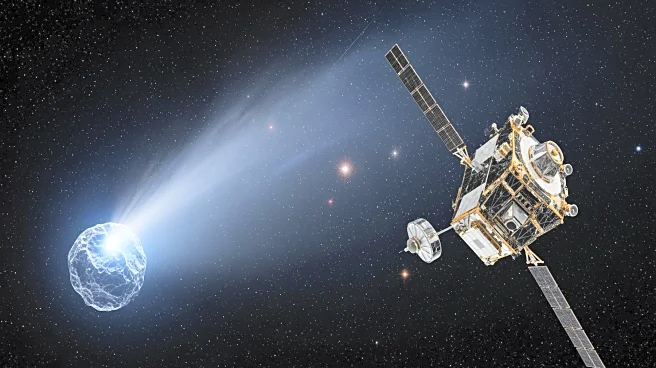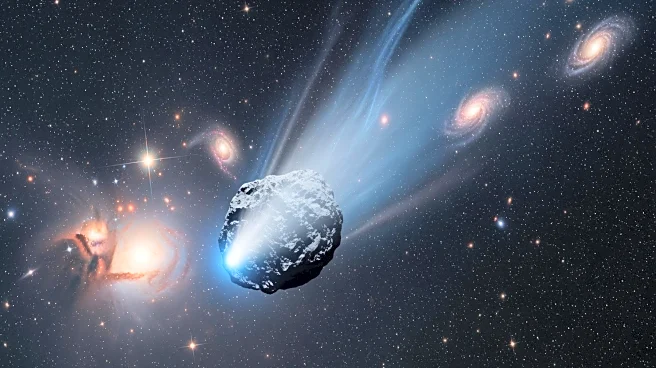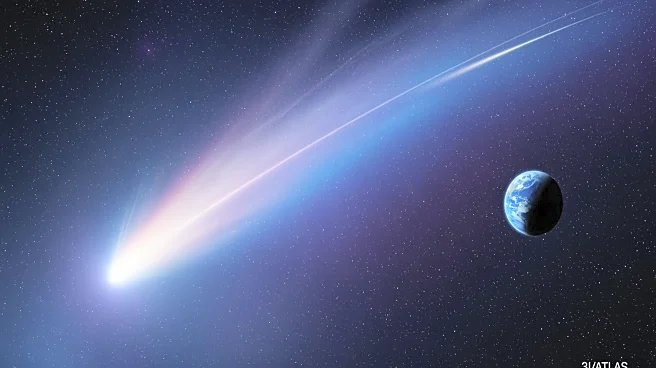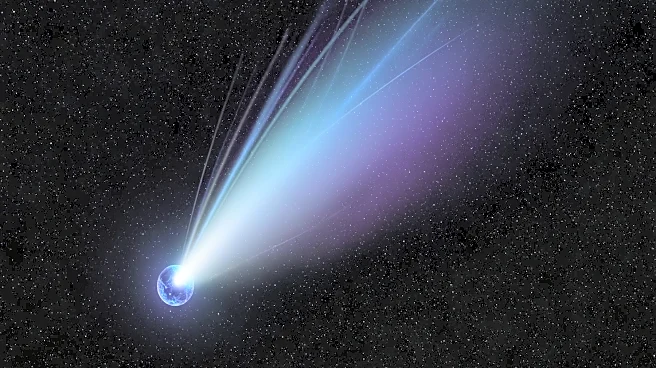What's Happening?
China's Tianwen-1 Mars orbiter has captured new images of the interstellar comet 3I/ATLAS, marking a significant observation from approximately 30 million kilometers away during the comet's pass by Mars in early
October. The images, released on November 6, 2025, include a short animation showing the comet's motion. This observation is part of a broader effort to study the comet, which has shown unusual behavior, including a color shift towards blue and signs of non-gravitational acceleration. These phenomena are currently under investigation by researchers. The comet, which is the third known interstellar object, has reappeared in Earth's morning skies after a solar conjunction, allowing for further observation by ground-based telescopes.
Why It's Important?
The observation of 3I/ATLAS by China's Tianwen-1 orbiter provides a rare opportunity to study an interstellar object up close, offering insights into its composition and behavior. The comet's unusual color changes and acceleration patterns could reveal new information about the processes affecting interstellar comets. This data is crucial for understanding the dynamics of such objects, which differ from those originating within our solar system. The findings could have implications for future space missions and the study of cometary physics, potentially influencing scientific theories about the formation and evolution of comets.
What's Next?
As 3I/ATLAS continues its journey, scientists will likely focus on analyzing the data collected from both space-based and ground-based observations. The comet's closest approach to Earth is expected on December 19, 2025, at a distance of about 1.8 AU. This will provide further opportunities for observation and study. Researchers are also calling for the release of additional data, such as images from NASA's Mars Reconnaissance Orbiter, to enhance understanding and reduce speculation. The ongoing analysis will aim to explain the comet's behavior and contribute to the broader knowledge of interstellar objects.
Beyond the Headlines
The study of 3I/ATLAS not only advances scientific understanding but also highlights the importance of international collaboration in space exploration. The data from China's Tianwen-1 and other international missions can help triangulate the comet's behavior, offering a comprehensive view of its dynamics. This collaboration underscores the global nature of space research and the shared interest in exploring the unknown aspects of our universe.












